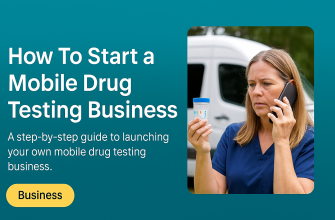Starting a taxi business with just one car is an achievable dream – even in an industry traditionally dominated by men. In fact, the taxi and rideshare field is changing as more women step into the driver’s seat. Roughly one in five taxi drivers in the U.S. are now women, and many passengers appreciate the safety and comfort female drivers offer – the industry even “thrives when women take the wheel” according to one report. If you’re a woman with an entrepreneurial spirit, you can launch a one-car taxi service on your own terms. This guide will walk you through clear, actionable steps to get started, from handling legal permits to marketing your services.
- Step 1: Research Your Market and Make a Plan
- Step 2: Take Care of Legal and Licensing Requirements
- Step 3: Budget for Startup Costs and Equip Your Car
- Step 4: Leverage Technology for Dispatching and Rides
- Step 5: Market Your Taxi Service and Build Your Customer Base
- From One Car to a Fleet – You’ve Got This!
Step 1: Research Your Market and Make a Plan
Every successful business starts with a solid understanding of the market. Begin by researching your local area’s demand for taxis and identifying your ideal customers. Are you targeting business travelers, college students, seniors who need rides to appointments, or perhaps women who prefer a female driver? Look at what other transportation services operate in your community (both taxis and rideshare like Uber/Lyft) and identify gaps you could fill. For example, maybe your town lacks a late-night taxi or a reliable airport shuttle – an opportunity for you to step in.
Write a Business Plan: Document your findings and strategy in a simple business plan. Include your service offerings, target market, pricing strategy, and financial projections. This doesn’t need to be complex, but writing it out clarifies your goals. Planning now also helps you foresee challenges (like competition from rideshare apps) and how you’ll address them. Keep the plan as your roadmap – and remember, it’s okay if you adjust course as you learn. The key is to start with a clear vision of how you’ll operate your one-car taxi business and what unique value you bring (for example, a reputation for safety and friendliness, or specialized services like only-for-women rides or pet-friendly trips).
Step 2: Take Care of Legal and Licensing Requirements
Launching a taxi service in the U.S. means navigating some legal requirements – but don’t let that intimidate you. This step is all about getting properly licensed and insured, which protects you and your customers. Regulations vary city by city, so you’ll need to do a bit of homework for your location. Here are the key legal items to address:
-
Register Your Business: Choose a business name and legal structure (many single-person businesses opt for an LLC for liability protection). Register with your state and obtain an EIN (Employer Identification Number) if needed for taxes. Some states or cities also require a general business license. This usually costs a small fee (often between $50 and $500 depending on the state).
-
Taxi Permits or Medallions: Most U.S. cities require a special taxi operator permit or medallion to legally pick up passengers for hire. In big cities like New York, taxi medallions can be very expensive and tightly regulated, whereas smaller towns have more affordable permits. Check with your city’s transportation or licensing department to learn the exact requirements. Typically, you’ll need to submit an application for a vehicle-for-hire permit (sometimes called a taxi company license) to your city or county authorities. This may include vehicle inspections and approval from a local taxi board or commission. Do not skip this – running an unlicensed taxi service can lead to hefty fines or even legal charges.
-
Driver’s License & Background Checks: Ensure you have a valid driver’s license. In some areas, you might need a chauffeur’s endorsement or taxi driver permit in addition to your standard license. Many locales also require a background check and possibly a drug test for taxi drivers. This is to ensure passenger safety. Be prepared to provide fingerprints or go through a brief safety course if required by your city.
-
Commercial Insurance: Insurance is non-negotiable – you must have proper coverage before you start picking up passengers. A personal auto policy usually does not cover commercial taxi use, so obtain a commercial auto insurance policy for your car. This protects you in case of accidents, covering liability (injuries or damage to others) and your vehicle. Some cities mandate minimum coverage levels or specific policies (for example, requiring coverage for uninsured motorists or personal injury protection). It’s wise to also carry general liability insurance for your business if you can, especially as you grow. Insurance will be one of your bigger ongoing costs, but it’s essential for legal compliance and peace of mind.
Tip: Contact your city hall or local Department of Transportation to get a checklist of all taxi licensing requirements in your area. Procedures can usually be found on the city’s website or by calling the licensing office. Some cities cap the number of taxi permits, so find out if there’s an application window or waiting list. By handling the paperwork and permits early, you set a strong foundation for a lawful and credible taxi service.
Step 3: Budget for Startup Costs and Equip Your Car
One advantage of starting with a single car is that your upfront costs are relatively low compared to a whole fleet. But you’ll still need to invest in a few key items to get your taxi business rolling. Below are the main startup costs to plan for (with rough U.S. estimates):
-
Reliable Vehicle: If you already own a suitable car, you’re a step ahead. If not, consider a used, fuel-efficient model to save money. A dependable used car might cost around $5,000–$15,000, whereas a new car could be $20,000 or more. Make sure the car has four doors and enough space for passengers and luggage. Popular choices include hybrid sedans (for better gas mileage) or even a minivan if you plan to service airport runs.
-
Licenses and Permits: Budget a few hundred dollars for business registration and taxi licensing fees. For example, a local taxi operator license might cost anywhere from $100 up to $1,000 depending on your city. Some cities also charge an annual permit renewal fee (often smaller). Include costs for your background check or driver permit here as well (typically $30–$100 for background processing).
-
Insurance: Commercial auto insurance for one taxi can range roughly $1,200 to $2,500 per year (about $100–$200 per month). The cost varies based on your location, coverage limits, your driving record, and even the car’s make/model. Get quotes from a few insurers. Remember, this coverage is critical – it protects you, your passengers, and your business.
-
Taxi Equipment: To turn your personal car into an official “taxi,” you’ll need a few pieces of equipment. A taxi meter (if you charge by distance/time) typically costs $200–$500 including installation. You’ll also want a roof sign/light and possibly decals or magnets with your company name – around $100–$300. Consider a partition for safety if you plan to operate late at night (partitions or security cameras can cost a few hundred dollars). Lastly, have a GPS navigation system or smartphone mount for navigation – being able to quickly and safely route to destinations is a must (most drivers use a smartphone with Google Maps or Waze rather than a standalone GPS unit nowadays).
-
Business Essentials: Don’t forget miscellaneous startup costs like getting a dedicated phone line (or business cell phone), which might be ~$50/month, and setting aside some funds for initial marketing (printing business cards, basic advertising). If you plan to accept credit card payments outside of an app, you may need a mobile card reader (devices like Square are often free or low-cost, with a small fee per transaction). Also, consider bookkeeping software or apps to track your earnings and expenses – some are very affordable (as low as $10/month), or you can start with simple spreadsheets.
Keep your expenses lean wherever possible. For instance, you likely don’t need an office space when starting out – you can dispatch and manage operations right from your home or car. The goal is to get on the road and start earning, then reinvest profits to grow. According to startup estimates, a bare-bones local taxi service can launch for around $10,000 in initial outlay, especially if you already own the car. By planning out these costs, you’ll avoid surprises and ensure you have enough funding (from savings or maybe a small business loan) to cover everything you need to start strong.
Step 4: Leverage Technology for Dispatching and Rides
Technology can be a game-changer for a one-car taxi operation. With the right tools, you can efficiently find customers, navigate routes, and even compete with larger companies. Here’s how to use tech to your advantage:
Join Ride-Hailing Platforms: One of the fastest ways to start earning with your car is to sign up as a driver on apps like Uber or Lyft. While this is technically operating as a rideshare driver (not under your own brand), it can be a smart interim step to generate income and learn the business. These companies have built-in demand; you just need to provide the service. Keep in mind, they do take a cut of each fare (which reduces your profit margins). However, you set your own hours and can quickly start getting riders. Some entrepreneurs drive for Uber/Lyft to pay the bills while simultaneously building up their own independent customer base on the side. It’s an option worth considering, especially early on.
Use a Dispatch and Booking System: If you want to operate under your own business name (and eventually get customers calling you directly), consider using a taxi dispatch software or app. Modern cloud-based dispatch systems (such as TaxiCaller, to name one) let you manage ride requests, track your vehicle via GPS, and even accept bookings through a passenger app or online. Even as a solo operator, this kind of software can help you stay organized – for example, it can log customer calls, schedule future pickups, and map the best routes. Taxi dispatch software can automate a lot of the logistics of running a taxi, making you look and operate like a professional fleet of one. In fact, these systems can automatically create and schedule routes for you, optimizing your time. Some dispatch apps also handle payments and let regular clients book you in advance.
GPS and Navigation: This might sound obvious, but having reliable navigation is vital. Make sure you have a good smartphone mount and a hands-free setup so you can safely use navigation apps while driving. Real-time traffic information from apps like Waze or Google Maps will help you pick the fastest routes and avoid delays – your customers will appreciate the efficient service. Additionally, you can share your live location with a waiting customer via phone apps, so they know when to expect you.
Tracking and Safety Tech: Since you’re on your own, consider tech that can enhance safety. A dashcam is a worthy investment – it records your trips and can deter bad behavior (and provide evidence if needed). Some insurance companies even give discounts for having dashcams. Also, utilize the safety features of dispatch apps or even simple tools like “Share Trip” on Google Maps to let a friend or family member know your route when you’re doing late-night pickups.
Taxi Networks and Apps: Apart from Uber/Lyft, look into whether your city has taxi-specific apps that riders use. For example, Curb is a popular taxi-hailing app in many U.S. cities that connects passengers with licensed local taxi drivers. By registering as a driver on such platforms, you can receive ride requests from users who prefer traditional taxis over rideshare. These apps basically act as a dispatch for independent drivers and small companies, expanding your reach to more customers. Each platform will have its own driver requirements, but since you’ve already handled your licensing and insurance, you should be in good shape to qualify.
In short, embrace technology. Even as a one-woman operation, you can use the same tools big fleets use. Scheduling apps, navigation, and online platforms can all make your life easier and help customers find you. It levels the playing field and lets you provide a modern, convenient service right from the start.
Step 5: Market Your Taxi Service and Build Your Customer Base
With your car ready and legalities sorted, the next big step is finding customers. Marketing might sound daunting, but for a local taxi business it’s largely about community visibility and word-of-mouth. Here are some effective marketing strategies to get the calls coming in:
-
Establish an Online Presence: In today’s digital age, you need to be visible online for people to discover you. Start by creating a simple website or even just a Facebook Business Page with your taxi service name, contact info, and what you offer. Register for a Google Business Profile (formerly Google My Business) so that your taxi service appears on Google Maps and local search results. This way, when someone nearby searches “taxi near me,” you have a shot at showing up. You don’t need to be a tech wizard – there are easy templates for websites, or you can hire a freelancer for a modest fee to set up a basic site. The key is to have an online listing that provides a phone number (or online booking option) and assures customers that you’re a legitimate, professional service.
-
Use Social Media: Social media is a free and powerful tool to promote your business. Create profiles on Facebook, Instagram, and even LinkedIn to connect with your community. Share engaging content – for example, you can post travel tips, highlight local events (“Need a ride to the county fair this weekend? Call me!”), or share behind-the-scenes looks at your journey as a female entrepreneur in the taxi world. Join local Facebook groups (many towns have community groups where you can occasionally mention your service) and consider Nextdoor for neighborhood-level visibility. Being active and friendly online helps put a personal face to your business, which can attract customers who want to support a woman-owned local company.
-
Local Partnerships: Networking with other local businesses can quickly open doors. Introduce yourself to hotels, restaurants, bars, and hospitals in your area – places that often need to help their patrons get transport. Leave your business cards or flyers there. You can even offer a small referral fee or free ride voucher for businesses that send you customers. Collaborating can be a win-win: for example, a hotel might be happy to have a reliable taxi contact for guests, and you get a steady stream of airport runs. Partnerships and cross-promotion with local businesses (or even influencers like popular local bloggers) can expand your reach and lend credibility. Don’t be shy about telling people what you’re doing – pride in your service is contagious, and people generally like to support new local ventures.
-
Quality Service = Word of Mouth: The most old-fashioned marketing strategy is still the most powerful: excellent service. Especially as a one-woman show, you are the brand. Make every ride a great experience – be punctual, have a clean car, and be friendly and professional. Little touches like offering bottled water or having phone chargers available can make riders remember you. A lot of your early business may come from word-of-mouth, so treat each passenger as a potential marketing agent for your company. Encourage satisfied customers to refer friends or leave reviews on your Google or Facebook page. Maybe give loyal customers a discount on their 5th ride or a referral bonus. These personal touches create loyal patrons who will call you (instead of hitting Uber) the next time they need a ride.
-
Traditional Marketing Tactics: While digital is key, don’t ignore offline marketing in your community. Keep a stack of business cards in your car and hand them out to riders. Put up a simple sign or magnet on your car with your phone number so people in town see it (your car is a rolling billboard!). You can also list your service in local directories or classifieds – some towns have a local newspaper or website where you can advertise cheaply. If your budget allows, consider running a modest ad in the community bulletin or sponsoring a booth at a town event to get your name out there. The more people in your area who know that [Your Name]’s Taxi Service exists, the more calls you’ll get.
Remember, marketing is an ongoing effort. Start small and focused: a Google listing, a Facebook page, a stack of cards, and pounding the pavement to introduce yourself around town. As you grow, you can explore more strategies. The advantage you have as a solo entrepreneur is that you are directly connected to your customers – your personal touch and reliability will set you apart from big impersonal apps. Many riders love the idea of supporting a woman-owned business, so make sure your story gets told!
From One Car to a Fleet – You’ve Got This!
Launching a taxi business with one car is not just about earning money – it’s about proving to yourself and others that you can build something from the ground up. Every big taxi company or limousine service started with one vehicle at some point. With each successful ride and happy customer, you’re laying the groundwork for potential expansion. Today it might be just you and your car; next year you might have a second car and another driver working with you, and a few years down the line you could manage a whole fleet.
As you gain experience and steady income, reinvest wisely. Maybe add a larger vehicle to serve different client needs (like an SUV for airport groups), or bring on a part-time driver during peak hours to grow your capacity. Scaling up will come with new challenges (managing drivers, more insurance, etc.), but you’ll tackle those when the time comes. The important thing now is to start and build momentum. Every entrepreneur faces doubts and obstacles, but you’ve chosen a path that can be incredibly rewarding and empowering.
Remember why you started this journey. Whether it’s the independence of being your own boss, the desire to provide a needed service in your community, or to blaze a trail for other women in transportation – keep that motivation in your heart. There will be long days and maybe late nights, but there will also be the pride of each fare completed and each compliment received from a grateful passenger. You have the drive to succeed (literally and figuratively!). So set your plans in motion, buckle up, and hit the road – your one-car taxi business is ready to go places, and so are you.
Congratulations on taking the first step toward turning your car into your own small business. With determination and the tips outlined above, you’re well on your way to proving that a woman can not only thrive as a taxi entrepreneur, but can potentially change the local transportation scene. Stay safe, stay focused, and enjoy the ride! Good luck, and see you on the road.









